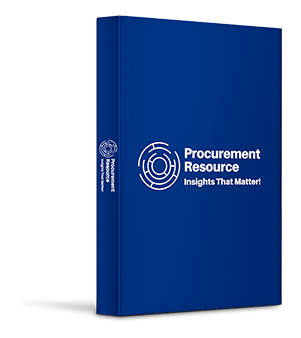Reports

Global Offshore Labour Market: Country Overview; Value Chain Analysis; Production Process; Trade Analysis; Market Dynamics: Drivers & Constraints, Industry Events, Innovations & Trends, SWOT Analysis; Porter’s Five Forces; Industry Best Practices: Sourcing Strategy, Procurement Model, Contract Structure, Negotiation Levers, Key Factors Influencing the Quotation; Key Supplier Analysis, 2024-2032
Offshore Labour Industry Report by Regional Category Spend, Price Analysis, Key Demand, Price Indicators, and Best Buying Practices
The global offshore labour market reached a value of about USD 69.3 billion in 2021. The industry is projected to grow at a CAGR of around 4% in the forecast period of 2022-2027 to reach a value of USD 87.6 billion by 2027.
The offshore labour industry report comprehensively analyses the industry, including key segments, trends, drivers, restraints, the competitive landscape, and other essential market aspects. At present, it is witnessed that various models of employing labour are being implemented for every spend classification by oil companies nevertheless in the years to come, big firms would choose a hybrid or blended model, owing to the high-level focus on building a holistic methodology for offshore labour role that can either be for temporary or permanent roles. The Asia Pacific is the highest category spender by region that is driving the demand for the offshore labour industry.
Industry Definition and Segmentation
Several organisations use offshore labour which gives them an opportunity to save their operating costs and maximise their revenues. Offshore labour comprises labours building up their base overseas or using a third-party dealer in a distinct country to execute services or work in the manufacturing business for an organisation within a different country such as the United States. The global offshore labour industry report comprises segments based on regions (Europe, North America, Asia Pacific, Latin America, and the Middle East and Africa).
The Asia Pacific Region is Driving the Growth of the Industry
Asia Pacific region has the maximum demand for global offshore labour occupying 35% of the total worldwide demand followed by the Middle East and Europe. The demand for offshore labour in the Asia Pacific is notably propelled by Exploration and Production (E&P) activities. Furthermore, an offshore well goes on to generate a relatively similar volume of crude for at least 10-15 years however an onshore well can range approximately 50%-60% of crude production in the initial year. Hence, this confirms a long-term demand for offshore labour in comparison to onshore. In addition, newly found or discovered deep-water resources and offshore wind projects are anticipated to drive the demand for global offshore labour and in turn, lead to the growth of the market.
One of the primary drivers for the development of the offshore labour industry is that it generally offers a lower cost for labour services. This factor is primarily beneficial for industries that may need a large number of labours to carry out their assignments, as decreasing overall labour expenditures can also result in reducing the cost of operations. Moreover, offshore labour assists a company’s size by expanding its number of employees and business services. In addition, organisations have access to additional and new types of specialist labour by using offshore labour and likewise, they are able to source a wide amount of talent and expertise from various countries.
Nevertheless, the market has to confront challenges from current low oil spending owing to the sluggish recuperation of crude oil prices, rigorous government policies, and health and safety procedures to be followed on offshore platforms that restricts the movement of labours on the board.
Best Procurement Practices
The global storefront design and installation services industry report by Procurement Resource gives an in-depth analysis of the best buying practices followed by storefront design and installation services providing and utilising regions across the globe, such as contract terms, engagement models, and buyer and supplier negotiation levers, among others.
Category Management Studies
An organisation shifts some sections of its business processes to a different country so that its services are completed, and it achieves certain advantages. Offshore labour can be employed by a company while continuing to be in full control of all daily operations by launching an industrial unit overseas or expanding a new location globally. Moreover, firms or organisations can select to utilise a third-party supplier overseas to save money on equipment, labour, and rent. There are two important types of offshore labour: production offshoring and services offshoring.
Access to Extensive Labour Pool is Anticipated to Further Drive the Offshore Labour Market
Normally the targeted locations for offshore labour outsourcing are preferably countries with enormously complex populations with fast-growing middle classes. The affluent markets such as IT and software development give a platform to these educated and skilled classes of labour to compete with others. As the manpower of competent and skilled IT experts in developed countries like the United States is not expanding rapidly, this kind of supply of supplementary offshore labour is enormously beneficial for the organisations. In addition, offshore labour outsourcing in IT companies is a widespread preference all through the United States.
The key zones in the industry are Europe, North America, Latin America, the Asia Pacific, and the Middle East, and Africa.
Key Industry Players Mentioned in the Offshore Labour Industry Report
- Oceanwide Offshore Services B.V
- NES Fircroft
- UTM Consultants Ltd.
- Airswift Transport, Inc
- UB Offshore Services Pvt. Ltd.
Market Landscape
Various employment methodologies and models are being implemented by companies specifically oil firms. Nevertheless, it has been projected that in future years, big companies would prefer employing hybrid or blended models that could either be temporary or permanent employment because of the rise in the focus on developing an all-around approach for offshore labour roles. The hybrid prototype approach will offer a specific point of contact for all groups of labour across upstream, downstream, and midstream. Moreover, the offshore labour master vendor model takes complete accountability for sourcing temporary and contract recruitment services. On the other hand, in the direct sourcing model vendor selects desired suppliers of offshore labours from a pre-vetted list.
Key Initiatives by Companies
- The software development services team of WhatsApp was outsourced even before it was launched in 2009. These offshore professionals managed its vital app development and upkeep whereas their in-house software developers focussed on customer-related responsibilities.
- Offshore outsourced professionals were hired by GitHub when they concluded that the United States-based specialists were too costly for the company to recruit as full-time employees.
1. Executive Summary
2. Offshore Labor Market Snapshot
2.1. Regional Overview
2.1.1. North America
2.1.2. Europe
2.1.3. Asia Pacific
2.1.4. Latin America
2.1.5. Middle East & Africa
3. Impact of Recent Events
4. Offshore Labor Value Chain Analysis
5. Offshore Labor Production Process
6. Trade Analysis
7. Major Risk Factors in Sourcing
8. Offshore Labor Cost Structure
9. Offshore Labor Price Analysis
10. Key Demand Indicator Analysis
11. Key Price Indicator Analysis
12. Offshore Labor Market Dynamics
12.1. Drivers & Constraints
12.2. Industry Events
12.3. Innovations & Trends
12.4. Swot Analysis
12.5. Porter’s Five Forces
12.5.1. Buyer Power
12.5.2. Supplier Power
12.5.3. Threat of New Entrants
12.5.4. Threat of Substitutes
12.5.5. Industry Rivalry
13. Industry Best Practices
13.1. Sourcing strategy
13.2. Procurement Model
13.3. Contract Structure
13.4. Negotiation Levers
13.5. Pricing Model
13.6. Key Factors Influencing the Quotation
14. Key Supplier Analysis
14.1. Oceanwide Offshore Services BV
14.2. NES Fircroft
14.3. Airswift
14.4. UTM Consultants LTD
14.5. UB Offshore Services Pvt. Ltd
In 2021, the global attained a volume of around USD 69.3 billion in 2021.
In the forecast period of 2022-2027, the market is projected to grow at a CAGR of 4%.
One of the primary drivers for the development of the offshore labour industry is that it generally offers a lower cost for labour services.
The major regions in the industry are North America, Europe, the Asia Pacific, Latin America, and the Middle East and Africa.
Some of the leading players in the industry are Oceanwide Offshore Services B.V, NES Fircroft, UTM Consultants Ltd., Airswift Transport, Inc, and UB Offshore Services Pvt. Ltd.
The global offshore labour market reached a value of about USD 69.3 billion in 2021 and is projected to grow at a CAGR of around 4% in the forecast period of 2022-2027. Asia Pacific region has the maximum demand for global offshore labour occupying 35% of the total worldwide demand followed by the Middle East and Europe. Generally, the targeted locations for offshore labour outsourcing are preferably countries with enormously complex populations with fast-growing middle classes. One of the primary drivers for the development of the offshore labour industry is that it generally offers a lower cost for labour services. This factor is primarily beneficial for industries that may need a large number of labours to carry out their assignments, as decreasing overall labour expenditures can also result in reducing the cost of operations. Some of the leading players in the industry are Oceanwide Offshore Services B.V, NES Fircroft, UTM Consultants Ltd., Airswift Transport, Inc, and UB Offshore Services Pvt. Ltd.
Procurement Resources’ detailed research approach explores deep into the industry, encompassing the macro and micro aspects of the industry. Its team of experts uses a combination of cutting-edge analytical tools and their expertise thus, delivering its customers with market insights that are accurate, actionable, and help them remain ahead of their competition.
Compare test & Choose the Right Report Version for You
RIGHT PEOPLE
At Procurement Resource our analysts are selected after they are assessed thoroughly on having required qualities so that they can work effectively and productively and are able to execute projects based on the expectations shared by our clients. Our team is hence, technically exceptional, strategic, pragmatic, well experienced and competent.
RIGHT METHODOLOGY
We understand the cruciality of high-quality assessments that are important for our clients to take timely decisions and plan strategically. We have been continuously upgrading our tools and resources over the past years to become useful partners for our clientele. Our research methods are supported by most recent technology, our trusted and verified databases that are modified as per the needs help us serve our clients effectively every time and puts them ahead of their competitors.
RIGHT PRICE
Our team provides a detailed, high quality and deeply researched evaluations in competitive prices, that are unmatchable, and demonstrates our understanding of our client’s resource composition. These reports support our clientele make important procurement and supply chains choices that further helps them to place themselves ahead of their counterparts. We also offer attractive discounts or rebates on our forth coming reports.
RIGHT SUPPORT
Our vision is to enable our clients with superior quality market assessment and actionable evaluations to assist them with taking timely and right decisions. We are always ready to deliver our clients with maximum results by delivering them with customised suggestions to meet their exact needs within the specified timeline and help them understand the market dynamics in a better way.
Email Delivery Price: $ 999.00
The global nutmeg market reached a value of about 134 thousand tonnes in 2021. The industry is further expected to grow at a CAGR of about 4.5% in the forecast period of 2022-2027 to reach a value of around 167 thousand tonnes by 2027.
Read MoreEmail Delivery Price: $ 999.00
The global Artificial Intelligence Market reached a value of about USD 192 Billion in 2021. The industry is projected to grow at a CAGR of around 23% in the forecast period of 2022-2027 to reach a value of about USD 664.86 Billion by 2027.
Read MoreEmail Delivery Price: $ 999.00
The global HEOR market reached a value of about USD 1364.3 million in 2021. The industry is further expected to grow at a CAGR of about 12.81% in the forecast period of 2022-2027 to reach a value of around USD 2779.2 million by 2027.
Read More
